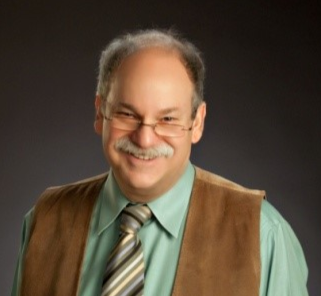Diving Into the Healing: Trusting the Heart
Vacillating between emotional pain and the somatic relief of psychic numbing, Marie came to my office bewildered and in shock. Two weeks earlier a truck had crashed into a car in which Marie’s mother was riding. Although the truck driver had survived, Marie’s mother and her partner had instantly died.
“I don’t know how you can help,” Marie said, her tired eyes revealing her grief. “You can’t bring my mother back or help me make sense of my loss. I’ve always had faith in a divine spirit, in an afterlife, but now nothing seems right.”
Given the traumatic impact of Marie’s loss, how could I help?
The COVID-19 Pandemic is a Paradoxical Challenge to Our Nervous System: A Polyvagal Perspective
The spread of the SARSCov2 virus presents an unprecedented event that rapidly introduced widespread life threat, economic de-stabilization, and social isolation. The human nervous system is tuned to detect safety and danger, integrating body and brain responses via the autonomic nervous system. Polyvagal Theory provides a perspective to understand the impact of the pandemic on mental and physical health. This perspective highlights the important role of the state of the autonomic nervous system in exacerbating or dampening threat reactions to the pandemic.
State Change is the Name of the Game: Further Adventures with Master Teacher John...
John Chitty, RPP, RCST®, (1949-2019) had many passions in his work: The two-chair method (working with polarity and pendulation), babies, relationships, energy medicine, states of health versus pathology, and autonomic nervous system state change. He had advice for every occasion from personal tragedy to business practice. He told several stories over and over again, which clued me into things he was most passionate about. One of them was the following, stated in an adamant and sometimes outraged insistent tone:
“I have people coming in here and telling me that they want to get to root of their trauma to be rid of it once and for all. Well, I don’t think that you need to get to the root of trauma; all you need is state change. (picks up hand and points at me) State change is the name of the game (inflection and repeated pointing with every word).”
“Yes sir!” I’d say.
An Honorary Urban Anthropologist
Many of my clients are faced with returning to environments which were and are emotionally hostile and traumatizing. They are treated the way they were treated in childhood. Even thinking about these past events resurrects post traumatic stress. But clients believe they have no alternative than to return to those environments. Work, holidays, illness, deaths call for their return. The return then reinforces past emotional wounds. These events occur time after time, but their underlying dynamics are unconscious. I call these events anniversary events (Kisch, 2019). Most often just being aware of returning to these environments is sufficient to trigger anniversary reactions. How does one protect clients from this re-traumatization when just talking about it does not work?
GenPax: Birth Matters
It is no longer acceptable for the more than 20 organizations dedicated to pre and perinatal life to operate as singular entities. We must band together and collaborate, we must aggregate our collective power to change the behaviors of the medical maternity community. If we are to successfully move the needle from traumatic birth – as a daily practice of U.S. hospitals – to a peaceful birth culture, we must form a unified front.
Call for papers is now open
EABP BERLIN CONGRESS
BODY PSYCHOTHERAPY AND CHALLENGES OF TODAY
6-9 SEPTEMBER 2018
REGISTRATION IS NOW OPEN
CALL FOR PAPERS IS NOW OPEN
According to the EABP's recent newsletter:
The next...
Active Pause® Part 2: If the pause is a natural part of the human...
What is that mindful practice? Is it sufficient to just have a ‘mindful practice’, such as mediation, or yoga, or Focusing? It would probably help some, but it wouldn’t be enough to replace the specific practice of inserting the lens. The more intense the potential danger, the more our reactive circuits take over, bypassing the circuits that counterbalance reactivity. In other words: The more intense the potential danger, the more we need to train our mind to recognize that this specific danger is safer than it appears to us.
Why am I calling this a ‘mindful practice’, as opposed to just ‘training’?
Boundary Boss: The Essential Guide to Talk True, Be Seen, and (Finally) Live Free
By Nancy Eichhorn, Ph.D.
My inner editor smiles (envision a Cheshire Cat grin) when reviewing a new book and its layout includes all the necessary...
SPT Magazine Volume 10, Number 2 is now live
We're pleased to share purposeful and useful insights, information, and clinical applications. Our contributors include: Genovino Ferri, Ronan M. Kisch, Darrell Sanchez, Sherry Genga, Yifan Zhang and Nancy Eichhorn.
Spirit Into Form: Exploring Embryological Potential and Prenatal Psychology
The book is imbued with the serious belief that the human mind and soul is not an accidental side product of genes, brain, and body, but a dimension in the human where he/she strives to fulfill his/her talents and aptitudes, including the possible healing of traumatic experiences in earlier stages. Spirit as well as body as necessary but not sufficient condition for being and becoming human














